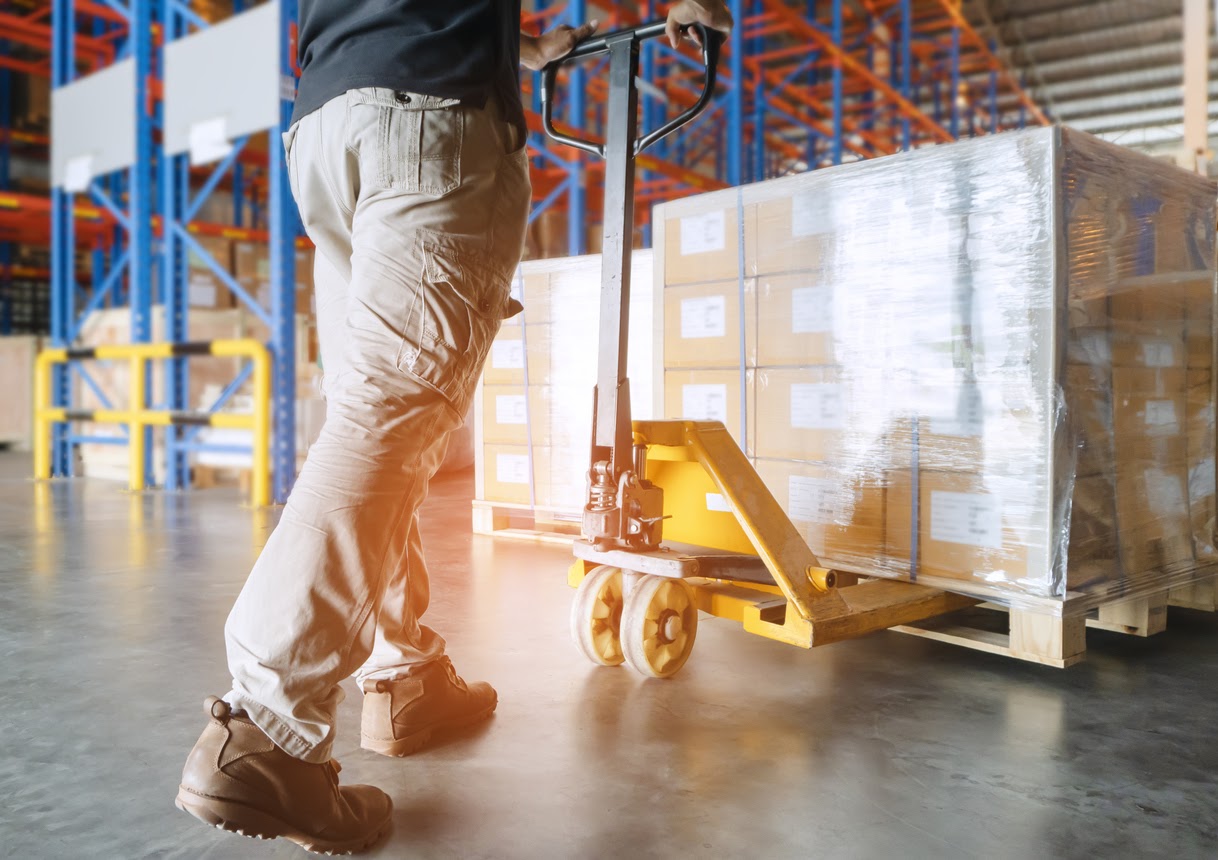How to load a pallet for shipping
The key to running a successful road freight service is efficiency. From warehousing and distribution processes right through to delivery and returns, finding the quickest, safest and most cost-effective methods of operating is essential. This includes loading your trucks in the most efficient way and managing and optimizing your pallet loading strategies.
Pallets are usually constructed from rigid wood or durable plastic and facilitate the transportation of goods in large quantities by making them more portable, protective, safe to use, and generally easier to move. ‘Palletising’ a load can also make sure loading and unloading cargo is easier and faster, as well as ensuring you are best utilising the space inside your vehicle.
However, just how is palletising done? What are the best methods of loading pallets onto a truck? And how many pallets are in a full truckload? For answers to all of these questions and more, read on as Freightline Carriers explores how to load pallets for road freight services.
How are pallets loaded onto trucks?
Although designed to make large or multi-item collective shipments more portable and easier to transport, pallets are typically heavy and require specialist equipment to be loaded onto trucks and other HGVs. Loading crews therefore should be fully trained and equipped with forklifts and/or pallet jacks to make the loading and unloading processes as quick, safe and efficient as possible.
While the physical side of loading pallets onto trucks is relatively simple, especially with the help of forklifts and pallet jacks, the different ways in which space can be best utilised by the methods in which the pallets are configured can be more complicated, with a range of different techniques available. The different methods you can choose, which we discuss in more detail below, all have different benefits and weaknesses, and are all suited to different types of loads and trucks. For this reason, to ensure you choose a method of loading your pallets onto your truck that takes safety and efficiency into consideration, as well as legal requirements, such as weight limits and safe load distribution, it’s important to familiarise yourself with each and calculate how many pallets you can safely fit in the vehicle before you start.
How to load pallets on a truck
There are three common methods of loading pallets on a truck, which are:
Side by side loading
As the name suggests, this method sees pallets loaded next to one another with the short end of each pallet (the end with jack/forklift openings) facing forwards and backwards. While not the most efficient method in terms of space utilisation, side by side loading is the quickest way of loading and unloading pallets, meaning valuable time can be saved.
Turned loading
Essentially the opposite of side by sideloading, the turned loading method sees pallets placed on the truck in a way that sees the long end of each pallet facing forwards and backwards, and the jack/forklift openings facing sideways. This method provides better space utilisation than the side by side method, meaning more pallets can be loaded. It also provides more protection for the goods stored on each pallet as there is less room for shifting and sliding to occur during transit. However, not all vehicles have enough space to accommodate the turned method, while loading and unloading from the rear can also be more challenging.
Pinwheeled loading
This method combines side by side and turned loading and sees every other pallet loaded in a different direction. If your trailer is not large enough to turn load throughout, this method is ideal when you want to best use space.
Whichever method you choose, it’s crucial to remember that all pallets must be inspected for signs of damage and/or weakness prior to loading, and calculations must be made to ensure payload and axle weight maximums are not exceeded. Lashings may also be required if there is too much space between pallets. This will prevent them from sliding during transit.
How many pallets are in a full truckload?
The amount of pallets that make up a full truckload clearly varies based on the size of truck you are using and the type of pallets being loaded (UK and Euro pallets differ in size). However, here in the UK, a standard flat 13.6m trailer can carry 26 UK pallets (13 on each side), loaded using the turned method. Alternatively, the same standard UK truck can carry 33 loaded Euro pallets (15 ‘turned’ pallets on each side, plus an additional three pallets side by side across the back).
